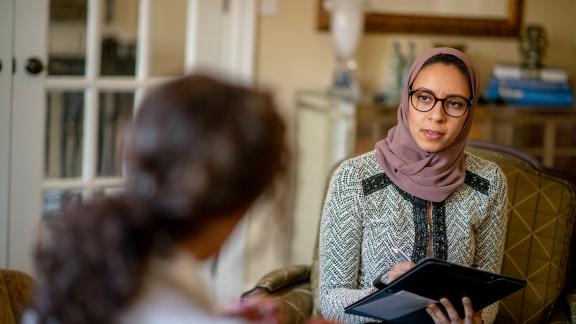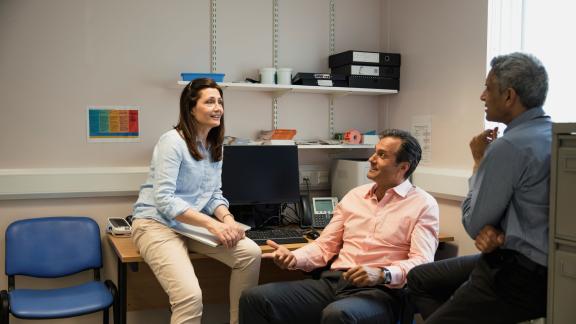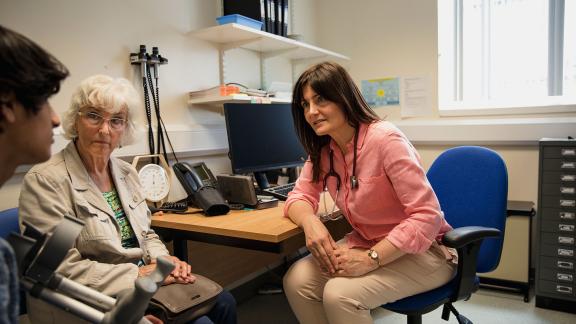Module four: Making the most of MDT working

Dr Rupa Joshi on what she learned in module four of the South East Primary Care Network (PCN) Leadership Development Programme, and the actions it has inspired her to take.
Failure demand
‘The demand placed on the system, not as a result of delivering value to the ‘customer’ but due to failings within the system.’ John Seddon
In module four of the programme, failure demand and how it affects PCNs was discussed to support a conversation around how we can influence at ICS level to improve handoffs between different partners within our system. Nick Downham talks about the four types of failure demand in healthcare:
- fragmentation by design
- specialist vs generalist muddle
- defensive pressures
- social as health.
Reducing fragmentation helps to improve the patient journey.
“The way we do things is quite often now in a more fragmented fashion and it [analysis of fragmentation by design] would feed into looking forward to how we might operationalise neighbourhood teams and how we might consider getting away from a more siloed approach of each going into their own specialty. If we learn from each other so that we’re able to bring a set of different skills that meet patient needs rather than have lots of different people calling in with fragmented relationships.” Programme participant
Our PCN leaders explored what integration means for us within our PCNs and how we could best use integration to reduce fragmentation and failure demand. In doing this, we reflected on global models.
The Buurtzorg model
The Buurtzorg model is used in the Netherlands with great success for care in the community setting. It builds on personalised care and what matters most to the patient. A consistent healthcare professional is trained across nursing/ physiotherapy/ occupational therapy etc and is able to provide holistic care without having to ask different healthcare professionals to attend. This healthcare professional also provides day-to-day care with activities of daily living and builds rapport and trust with the patient.
“We looked to the model in the Netherlands, run by teams, mainly nursing, but also with some physiotherapy, occupational therapy, all trained across each other’s skill sets, and thus meant that when going to visit patients in their homes, especially the frail, housebound and end-of-life care, they were able to deliver a set of interventions rather than them coming to them in a more fragmented fashion. And this also allowed them to create and maintain relationships with those patients, all of which had very positive effects.” Programme participant
Our guest speaker, Paul Jansen, described it as ‘humanity over bureaucracy’ because the first action on entering the patient’s home is to have a cup of tea or coffee with the patient for a social catch up. This enables the building of a relationship and the medical care and note-writing comes afterwards.
Our PCN leaders reflected on the healthcare professional being a carer as well as a trained nurse and really getting to know the needs of their patient. Our participants found the concept refreshing, that every visit starts with a chat over a cup of coffee for a catch up, before any medical care is given. We considered that perhaps, the key to reducing fragmentation and improving integration is to simplify our response.
The Brazilian community health worker model
The Brazilian model also takes us right back to community care – a health worker is a member of the community, employed to oversee 120-150 households and visit patients in their own homes. The Brazilian health workers build relationships, are the first port of call for social, emotional and medical needs, and are able to signpost to services. They may also be trained in certain interventions such as health checks.
“… we were looking at the Brazilian community health worker model and how that’s been implemented in Westminster. So practically speaking, as a result of that, we’ve already been in contact in our PCN with the Westminster team and primary care home and we will be seeking to see how we can operationalise that in our own PCN, hopefully involving members from the council, as well as from our other practice.” Programme participant
I have been inspired by exploring global models of MDT working. There are also plans within my own place-based primary care collaborative to use the Brazilian model for outreach health checks within our deprived communities, seeking to reduce health inequalities.
Impact and changes in practice following the MDT leadership module
Since the module, some PCN participants from Oxford have embarked on a field trip with councillors to Westminster and plans are in place to embed this model of care in an Oxford-based community.
Exploring these models sparked great debate from our participants, which led to a deeper understanding of the markers of successful MDT working, learning from the COVID-19 vaccine programme, and how to engage with communities using the insights from these models of care. As a result of the leadership programme, new projects are being launched:
“We are now doing a version of MDT outreach into our community with our patients, through our patient participant group. That's been quite good and that is one of the things this course has done - just opened the eyes to that possibility.” Programme participant
In terms of my experience, it has been insightful to think outside the usual NHS models of care and use the patient perspective. I have already spoken to wider partner members within my locality, including the voluntary sector, to gauge interest and consolidate our thinking on how we can achieve better outcomes for patients by integrating care. It always starts with the patient, and if we continue to put ourselves in their shoes, listen with fascination, ask communities what they need from us, and empower our frontline staff, we can achieve more. Learning from each other and sharing experiences will help us overcome our challenges. Ensuring we ‘get it right first time’ for our contacts will reduce the duplication and fragmentation of care.
My next step is to ensure that we look more closely at how our local health care systems can work together to reduce inefficiencies, and consider how the ICB can help us achieve better integration and tackle failure demand.
However, there is still recognition that engaging staff and communities is challenging:
“The scary thing is that you're sat in the room and you hear the theory. That's amazing. And all the things you think you can see is a possibility. And then you get back to your PCN and there, you’re kind of stuck in that mindset. And it just seems unachievable. I always go back out full of enthusiasm and then gradually it gets beaten out of you, but I try and take something from what we've learned from every session, and if I can feed it into meetings, then I will do.” Programme participant
We believe that we need to create the support structures and networks for PCN leaders so that no one feels alone when they have a vision for MDT working, but do not feel that their current context is providing this. Spreading best practice widely is helpful in understanding the art of the possible. We need to be presenting system-wide solutions to the barriers that our PCN leaders are finding too challenging to overcome. This can only be achieved by all partners working together.
Dr Rupa Joshi is a GP and clinical director for Wokingham North Primary Care Network and deputy chair of Berkshire West Primary Care Alliance; clinical adviser for NHS England’s Primary Care Transformation team; chair of the Workforce and Estates Design Group at NHS Confederation’s Primary Care Network; and clinical adviser for learning and development for the South East PCN Development Programme.



